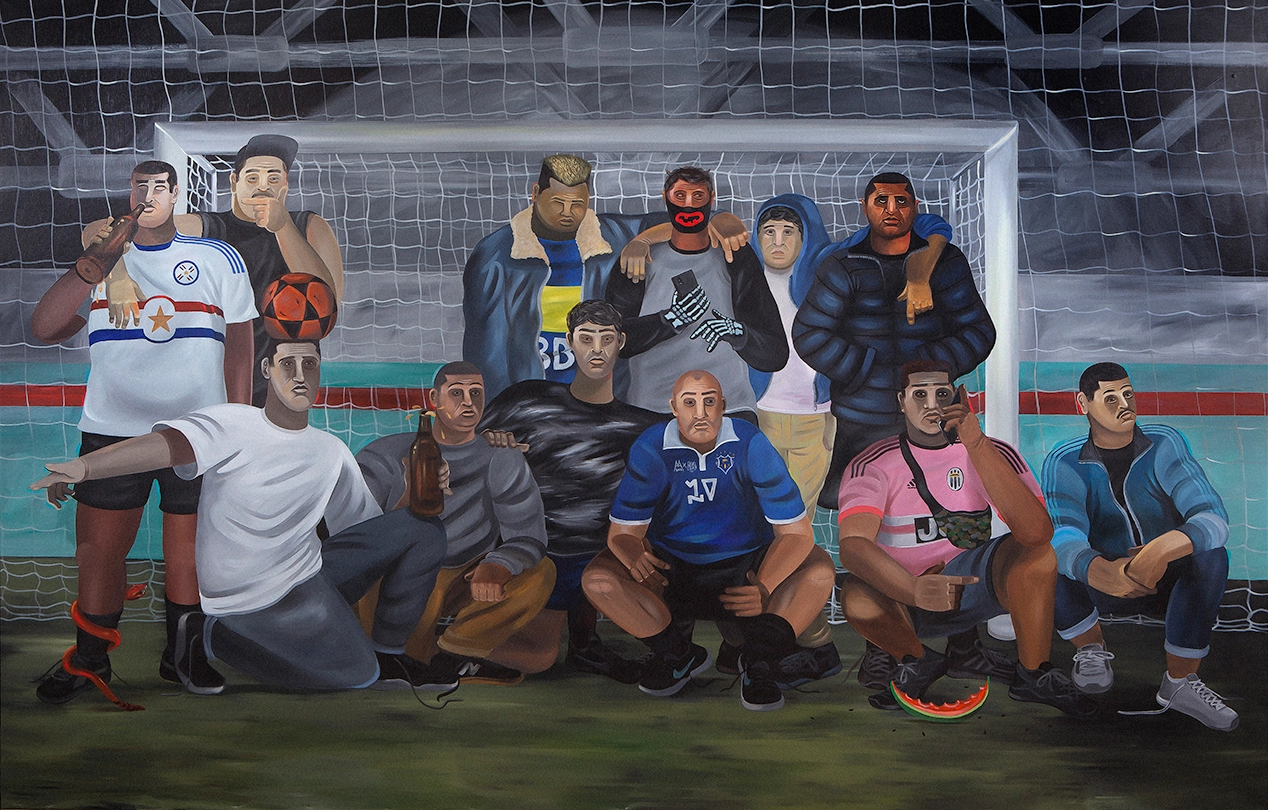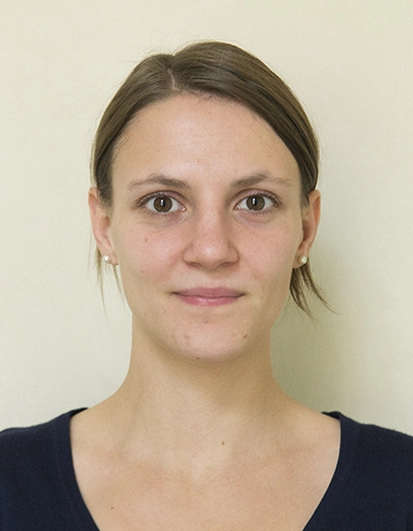Under the fresh impressions of the recent World Cup, it may seem quite natural that an artist from Argentina, a country with a long and glorious football history, chose this sport as the subject of his paintings. But Messi's countryman is far from depicting iconic footballers. His works celebrate amateur football with all the rituals that belong to this peculiar world.

As a child, Martin Kazanietz tried multiple sports, but football eventually won him over. He attended football school when he was just five years old and started painting when he had to take a year off from the sport due to an injury. He channelled the frustration and nostalgia he experienced during his unwanted break, taking the opportunity to portray one of football's important themes - vulnerability and limits. He studied graphic design in Buenos Aires, and through graffiti and mural painting, examples of which adorn the San Telmo and Boca Juniors football stadiums in Buenos Aires, he found his way to the canvas.

As a figural painter, he creates robust characters with references to naive and folklore painting, which betray his inspiration by the Colombian artist Fernando Botero, known for his oversized figures. Although Kazanietz himself claims that Botero's influence is more intuitive than consciously constructed.
„I recall that when I was a child, my parents had a reproduction of Botero’s Una familia, where the characters posed like an old photograph. I was drawn to it. There was something funny about the characters because they all had serious expressions like a classical painting but it was all extremely exaggerated, because of their fatness.“
Kazanietz references this depiction of the “chubby people” even through his pseudonym Gordo Pelota or ‘fat ball’.

This young contemporary artist paints an environment he knows intimately, shifting our attention to the world of football in his neighbourhood. We find ourselves at matches between players of different levels, which are a bit rule-free, sometimes full of fights, but where no one gets benched. Matches, that are an excuse to see friends every week, but also a way to relax.
His scenes explore a peculiar tribe with its own rules. The paintings are full of details and attributes of true football enthusiasts - beer during the game, a cigarette at half-time, asado (or Argentinian barbecue) after the game, jerseys of football stars and famous clubs, tattoos, cards and bets. And an occasional demonstration of real skill.


Gordo Pelota's exhibition at All City Gallery in Brooklyn this year was titled Diaro Derrota (Everyday Defeat). The apt title was chosen specifically for the exhibition held in North America, whose motto, according to the artist himself, is "to compete and win". In contrast, Kazanietz adds, South Americans, under the influence of the country's historical and political events, are more resilient to defeats and better able to cope with them because they experience them regularly. This points to one important characteristic of the painter's work. Although he creates works about football, often with a touch of humour or irony, at the same time his paintings faithfully reflect the image of South American society and present a counterpoint to the harsh world of professional sport.
„I like professional football, just like I like watching TV shows or movies, but it has nothing to do with my reality. In that sense, I don't see anything appealing about portraits or paintings that glorify football celebrities. I prefer the ordinary person who spends a little bit of their money on renting a pitch, beer, cigarettes and barbecues to have fun with friends.“

In addition to football, he also creates paintings from the basketball environment, which he also practices. Since 2020, he has been moving away from sports themes to depicting everyday life captured in mobile phone photos, which he transforms into paintings. He paints the photos he finds on his phone in the size of the phone screen or, conversely, in real dimensions. He is interested in the relationship between the analogue and digital image while responding to the overabundance of photographs we are overwhelmed with these days. By transferring photographs of often banal moments to the canvas and stripping them of their context, the work emerges, in his opinion, with surprising symbolism and interesting connections to contemporary life.

Martin Kazanietz was born in 1985 in Buenos Aires, where he also studied graphic design. He has worked as an illustrator for So Foot, Victory Journal, Mundial Mag, Pickles Magazine and Season Annual. He has participated in group and solo exhibitions in Los Angeles, San Francisco, Antwerp, Brussels, Buenos Aires, Paris, Madrid, Barcelona, and others. In 2021, he held his first solo exhibition outside Argentina.








